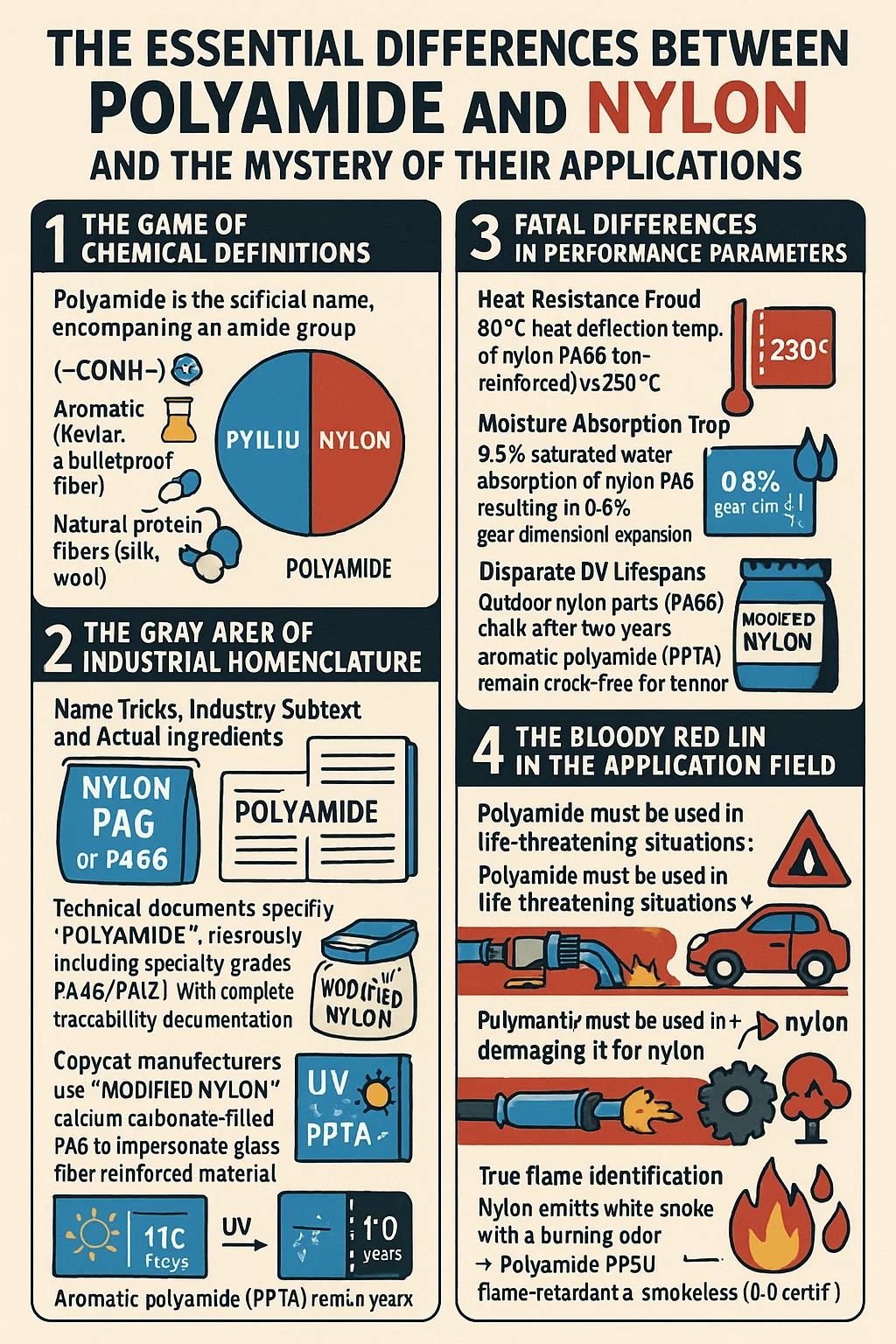
The Essential Differences Between Polyamide and Nylon and the Mystery of Their Applications
1. The Game of Chemical Definitions
Polyamide: The official scientific name, encompassing all polymers containing an amide group (-CONH-), including:
Aromatic (Kevlar, a bulletproof fiber);
Long-chain aliphatic (PA12, an oil-resistant pipe);
Natural protein fibers (silk, wool);
Nylon: A commercial designation registered by DuPont in 1935 (patent number US2130523), specifically referring to aliphatic polyamides (such as PA6/PA66), essentially a subset of polyamides.
2. The Gray Area of Industrial Nomenclature
| Labeling Strategy | Industry Implication | Actual Material Reality |
|---|---|---|
| Suppliers advertise "Nylon" | Signals commodity PA6/PA66 (low-cost bulk material) | Often contains ≤25% recycled content with degraded properties |
| Technical documents specify "Polyamide" | Indicates engineered grades (PA46, PA12, etc.) | Full traceability and certified specifications |
| Counterfeit "Modified Nylon" | Passes off filler-loaded PA6 as reinforced grade | Calcium carbonate instead of glass fibers → 30% lower HDT |
3. Fatal Differences in Performance Parameters
Heat Resistance Fraud: 80°C heat deflection temperature of nylon PA66 (unreinforced) vs. 230°C heat deflection temperature of polyamide PA6T (reinforced).
Moisture Absorption Trap: 9.5% saturated water absorption of nylon PA6 results in 0.8% gear dimensional expansion. 12% water absorption of polyamide PA12 is only 1.5% and is the preferred choice for precision medical catheters.
Disparate UV Lifespans: Outdoor nylon parts (PA66) chalk after two years, while aromatic polyamide (PPTA) remain crack-free for ten years.
4. The bloody red line in the application field
Polyamide must be used in life-threatening situations; the price of mistaking it for nylon
Automotive turbocharger pipes: PA6T (polyamide) and PA66 (nylon) soften and leak → engine fire
Deep-sea fiber optic cable armor: PA12 (polyamide) and PA6 (nylon) hydrolysis and fracture → communication interruption
Bulletproof inserts: Aramid (polyamide) and nylon PA66 are penetrated → casualties
5. Procurement Scam Detection Manual
Certification Source: Require UL Yellow Card (chemical name for polyamide, such as Polyamide 66; for nylon, Nylon 6)
Melt Index Measurement: Nylon PA6 has a melt index of 27g/10min (230°C) vs. 15g/10min (295°C) for polyamide PA46
True Flame Identification: Nylon emits white smoke with a burning odor → Polyamide PPSU is flame-retardant and smokeless (V-0 certification)




 English
English 中文简体
中文简体 Español
Español русский
русский





